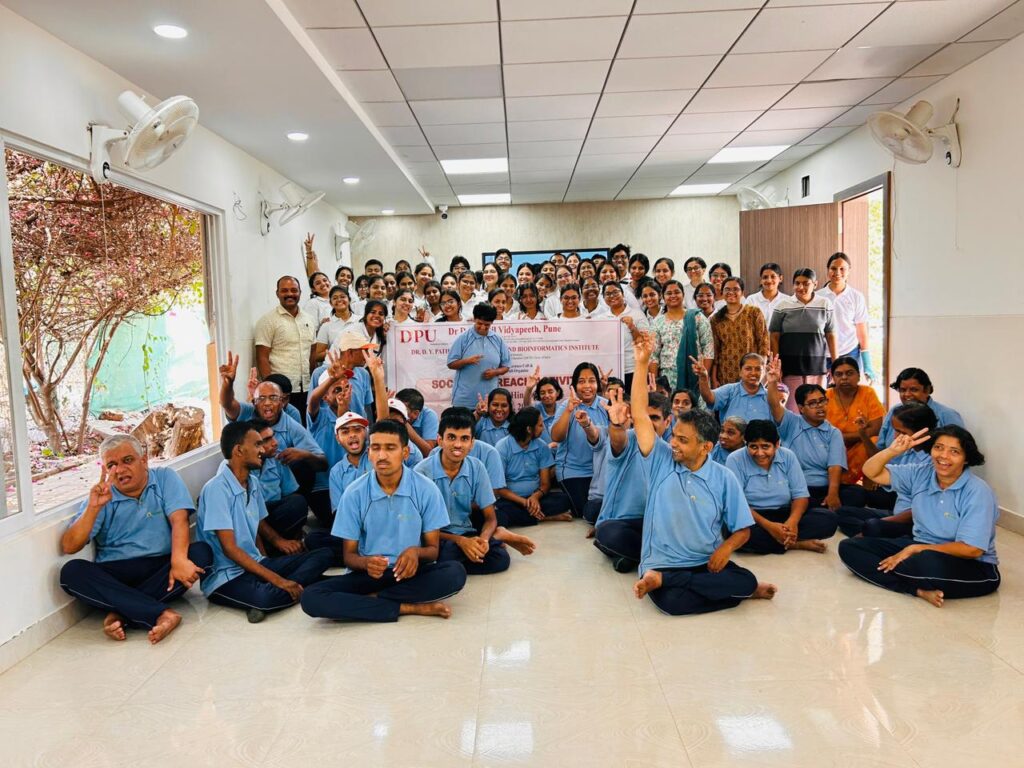
Navkshitij has been working in the field of inclusive rehabilitation of the intellectually disabled (ID) for 20 years. We are a thriving organization, maintaining the same vigor and passion with which we started. Through our journey, we have gained a unique perspective by looking at the world through the innocent eyes of our special friends. Here, I will share some wonderful insights that our special friends have revealed to us.
Insight 1: The Challenged Do Not Feel Challenged Among Their Peers
Recognizing these challenges, Navkshitij is dedicated to facilitating the holistic development of individuals with intellectual disabilities. At Navkshitij, each resident’s journey towards independence and rehabilitation begins with a carefully tailored plan. These plans encompass various aspects of development, starting from activities of daily living and extending to comprehensive rehabilitation strategies. Since the needs and abilities of each individual differ, the plans are customized
accordingly.
Understanding the Genesis of Behavioral Issues
Day in and day out, these children face constant correction from so-called normal people. Although well-intentioned, these corrections are often not communicated kindly. Imagine a situation where you receive instructions 24×7 and don’t understand why your actions are being corrected. The intellectually disabled tolerate this for a long time until they discover that aggressive behaviors like shouting, throwing things,
or even self-harm cause others to back down. These behaviors become their defense mechanisms, which we perceive as behavioral disorders, but for them, they are survival skills.
Example: “Jonny Don’t”
I am reminded of a story I heard. On the first day of school, a teacher asks a child for his name. The child responds, “My name is Jonny Don’t.” The teacher finds this amusing. From a young age, Jonny heard people saying, “Jonny, don’t!” whenever he did something. He internalized this to the point where he believed his name was “Jonny Don’t.” This anecdote illustrates the world our special friends live in. Their behavioral issues are their escape routes or survival skills.
Transition to Navkshitij
About a month after admission, our special friends start realizing that Navkshitij is their second loving home. They begin to enjoy life in a barrier-free environment. At Navkshitij, our special friends are considered normal, and we, the staff, are seen as the abnormal ones. As they settle in, the need to display defense mechanisms decreases, leading to a dramatic reduction in temper tantrums and violent behaviors.
What Makes the Difference?
The staff at Navkshitij are highly sensitized and have a positive approach to workingwith adults with intellectual disabilities. They are trained to understand both thedisabilities and capabilities of each new entrant. Instead of trying to make them‘normal,’ the focus is on helping them become more self-sufficient.
Daily Routine at Navkshitij
- Morning Routine: The day starts at 7 am with the sounds of birds and prayers due to the greenery on our campus. After activities of daily living (ADL), they engage in some exercise.
- Meals and Activities: Breakfast is followed by various activities. Initially, new entrants might resist but are gradually drawn out by the sounds of music and laughter. Observing others enjoying themselves helps them integrate into the community.
- Vocational Training: Five hours a day are dedicated to vocational training at our Art and Skill Cell. Special educators tailor training to each individual’s needs, focusing on life skills and hygiene.
Tailored Activities for Happiness
At Navkshitij, every activity is designed to ensure our special friends live a healthy and happy life. Each person finds their comfort zone, whether it’s working in the workshop, garden, kitchen, office, or security. Different folks have different strokes, and everyone has their place.
As we always say: The main product of Navkshitij is Happiness.
Author: Dr. Chadrashekhar Desai
Be A Part Of Our Spread Happiness Movement Bringing Happiness:
Lighting Up The Lives Of Special Friends
Donate- Your contribution directly supports our programs and services, ensuring that persons with intellectual disabilities (PwIDs) receive the care and support they deserve.
Register- Join our community as a volunteer or supporter to stay updated on our initiatives and opportunities for involvement.
Spread The Word- Share our mission with others to raise awareness and advocate for the rights of PwIDs, amplifying the impact of our work. Join Our Community #BringingHappiness #LifeatNavkshitij #LightingThePath
